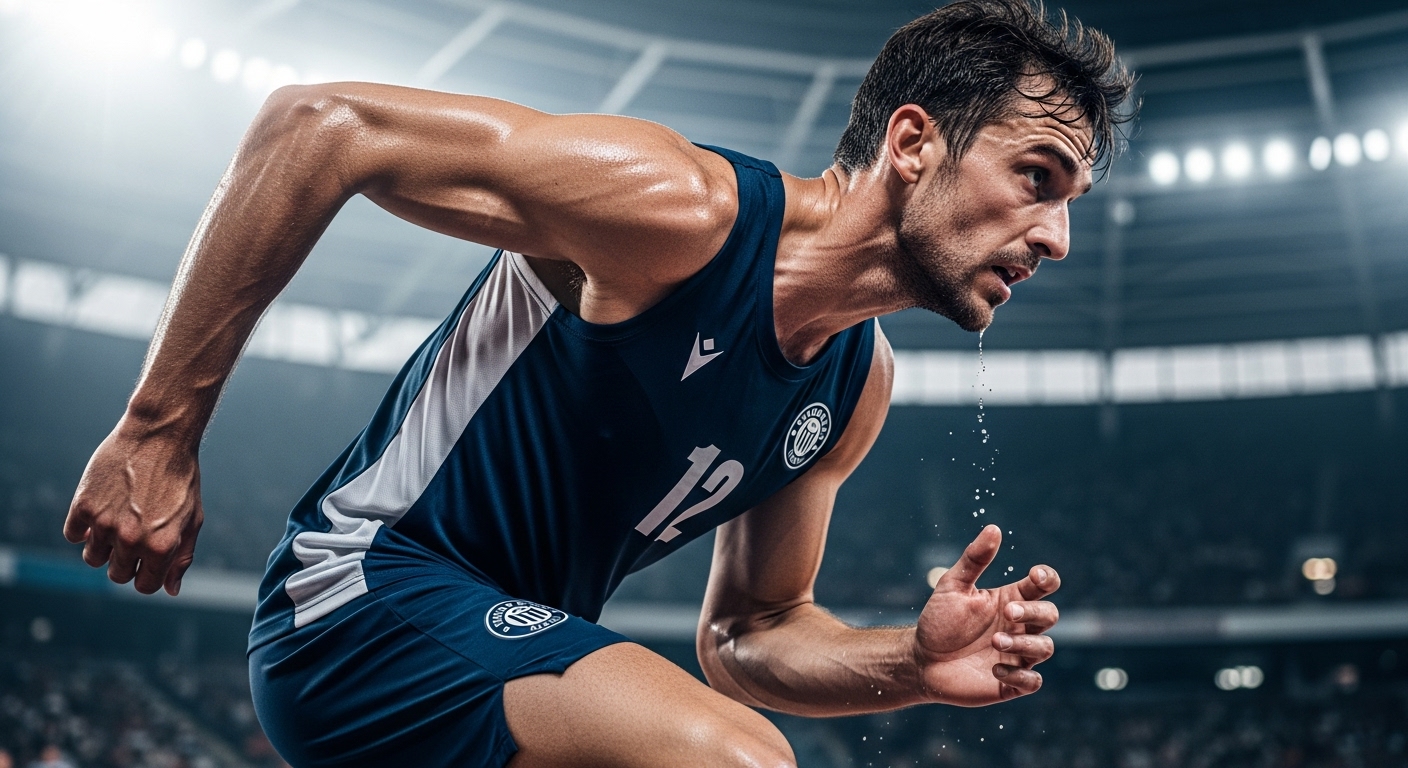Professional athletes represent the pinnacle of human performance, blending raw talent with years of relentless training, discipline, and consistency. Their performances captivate audiences worldwide, whether it’s the explosive speed of a sprinter, the endurance of a marathon runner, the precision of a mixed martial artist, or the resilience of a football player battling through a season. Watching them dominate in their respective fields often leads to one pressing question: what does it take to train like a pro athlete? While the exact programs differ based on sport, the fundamental principles of elite training can be understood and even applied by anyone willing to commit. Training like a professional athlete is not simply about lifting heavy weights or running endless miles. It is about building a lifestyle where every decision supports peak performance.
At the heart of professional training is consistency. An athlete’s body is their greatest tool, and maintaining it requires structured routines that are followed day after day, season after season. Unlike recreational fitness enthusiasts who might train sporadically, professional athletes rarely miss a session. They train according to periodized programs designed to maximize performance while minimizing injury. Periodization is a method of structuring training into phases, each with specific goals. For example, one phase might focus on building foundational strength, another on developing explosive power, and another on refining sport-specific skills. This strategic progression ensures continuous improvement without burnout, something amateurs often overlook when they either overtrain or lack a long-term plan.
Strength and conditioning form the backbone of nearly every athlete’s regimen. Whether an athlete competes in basketball, MMA, soccer, or swimming, developing strength is essential. However, professional strength training is not about vanity muscles but about functional power that translates to performance. Movements are often compound in nature, such as squats, deadlifts, presses, and Olympic lifts. These exercises engage multiple muscle groups, mimicking the dynamic demands of sport. Additionally, training often incorporates unilateral exercises to address imbalances, since athletes frequently favor one side of their body in competition. Core stability is also emphasized heavily, as nearly every athletic movement originates from or passes through the core.
Conditioning is equally vital and tailored to the specific sport. A professional boxer requires a balance of aerobic and anaerobic conditioning, while a soccer player must develop the ability to sustain activity over ninety minutes with bursts of sprinting. Endurance athletes such as cyclists and marathon runners place tremendous focus on cardiovascular capacity, whereas sprinters and football players prioritize explosive bursts of energy. This means that training programs are never one-size-fits-all but instead are customized to meet the exact demands of competition. High-intensity interval training, steady-state cardio, plyometrics, agility drills, and resistance conditioning are all tools professionals use depending on their needs.
Beyond physical training, recovery is one of the most important yet underrated aspects of professional athletic performance. Training breaks the body down, but recovery rebuilds it stronger. Professional athletes often spend as much time and energy on recovery as they do on training itself. Sleep is the foundation of recovery, and most athletes aim for eight to ten hours per night to allow the body to repair muscle tissue, restore hormone balance, and consolidate motor learning from training. In addition to sleep, recovery techniques such as ice baths, cryotherapy, massage, stretching, foam rolling, and mobility drills are incorporated regularly. Many athletes also rely on physiotherapists to help with injury prevention and rehabilitation, ensuring that minor issues do not turn into career-threatening problems.
Nutrition is another cornerstone of professional training. The body is fueled by what it consumes, and pro athletes treat food as a performance tool rather than a casual indulgence. Their diets are carefully structured to meet macronutrient requirements, ensuring the right balance of proteins, carbohydrates, and fats. Protein supports muscle repair and growth, carbohydrates fuel intense training sessions and games, and healthy fats aid in hormone production and recovery. Micronutrients, hydration, and supplementation also play significant roles. For example, athletes must ensure adequate intake of vitamins and minerals such as magnesium, vitamin D, and iron, as deficiencies can hinder performance. Hydration is meticulously tracked, as even minor dehydration can impair endurance, focus, and power output. Many athletes also work closely with nutritionists who adjust their intake based on training cycles, body composition goals, and upcoming competitions.
Mental training is just as important as physical preparation. Pro athletes often face enormous pressure to perform, and maintaining focus under stress can be the difference between victory and defeat. Sports psychology has become a crucial part of training programs, with athletes practicing visualization, mindfulness, and goal-setting techniques. Visualization allows athletes to mentally rehearse their performance, creating neural pathways that improve execution in real life. Mindfulness helps them stay present during competition, blocking out distractions and anxiety. Goal setting provides structure, motivation, and measurable progress. Many athletes also work with mental coaches to build resilience, confidence, and coping strategies for setbacks.
Skill development is another area where professional athletes separate themselves. Beyond general fitness and conditioning, athletes must constantly refine their sport-specific skills. A basketball player must perfect shooting mechanics, dribbling, and defensive positioning. A soccer player drills passing, ball control, and tactical awareness. A fighter sharpens striking combinations, grappling techniques, and defensive strategies. These skills are developed through endless repetition, with coaches scrutinizing every detail. Even athletes at the top of their game continuously return to fundamentals, recognizing that mastery comes not from complexity but from consistent execution of basics under pressure.
Professional athletes also rely heavily on coaching and support teams. Rarely does an elite performer reach the top alone. Strength coaches, nutritionists, physiotherapists, psychologists, and sport-specific coaches all contribute to a holistic program. The collaboration between these specialists ensures that every aspect of an athlete’s preparation is optimized. For amateurs seeking to emulate this approach, it highlights the importance of guidance. While not everyone has access to a full team, seeking expert advice in areas like training programming or nutrition can make a significant difference.
Technology has also transformed how athletes train. Wearable devices track heart rate, sleep quality, workload, and recovery. Motion capture and video analysis allow coaches to break down biomechanics and correct inefficiencies. Data-driven approaches mean that athletes can adjust training loads to avoid overtraining and maximize gains. For example, monitoring heart rate variability helps determine whether the nervous system is ready for intense training or requires rest. This scientific approach ensures that training is not based on guesswork but on measurable feedback.
One often overlooked aspect of professional training is lifestyle management outside of the gym or arena. Many athletes tailor their daily routines to support performance. This includes structured schedules, adequate downtime, and minimizing stress. Discipline extends to everything from sleep hygiene to limiting unhealthy habits. Social life, travel, and personal commitments are managed in a way that does not compromise performance. The sacrifices made by professionals are often invisible to fans but are a key part of why they succeed at the highest levels.
Injury prevention is another critical component. Professional training is intense, and without proper precautions, the risk of injury is high. Athletes dedicate time to mobility work, corrective exercises, and warm-ups designed specifically to prepare their bodies for the demands of training. They listen to their bodies and adjust when necessary, understanding that pushing through pain recklessly can lead to long-term setbacks. For amateurs, adopting this mindset is crucial, as many injuries result from neglecting warm-ups, ignoring proper form, or overtraining without recovery.
Training like a pro also requires embracing adaptability. Sports and competition constantly evolve, and so must training methods. Professionals and their coaches remain open to new techniques, scientific discoveries, and recovery tools. They continually evaluate and refine their programs to stay ahead of competitors. This adaptability not only keeps them at peak performance but also extends careers by preventing stagnation and reducing the likelihood of chronic injuries.
For those who wish to train like professional athletes without competing at that level, the takeaway is clear. It is less about copying every detail of their routines and more about adopting the principles behind them. Consistency, structured programming, emphasis on recovery, proper nutrition, mental conditioning, skill refinement, professional guidance, and lifestyle discipline all combine to create an environment where peak performance can thrive. The average person may not have access to elite facilities or full-time coaches, but they can still focus on building balanced programs, prioritizing recovery, eating mindfully, and developing mental resilience.
Perhaps the most profound lesson from professional athletes is their mindset. Training at that level requires patience and the understanding that results do not come overnight. Progress is measured in months and years rather than days. It requires embracing the grind, pushing through plateaus, and maintaining motivation even when success feels distant. The ability to persevere through setbacks, adapt to challenges, and keep striving for excellence is what truly separates professionals from casual enthusiasts.
In the end, to train like a pro athlete is to dedicate oneself fully to the pursuit of excellence. It is a lifestyle where every decision contributes to performance, where the body and mind are honed with equal attention, and where discipline trumps fleeting motivation. While not everyone will stand on the podium or compete under the lights, adopting these principles can transform the way anyone approaches fitness, health, and personal growth. Training like a professional is not just about physical ability—it is about cultivating a mindset of resilience, discipline, and relentless pursuit of betterment.

